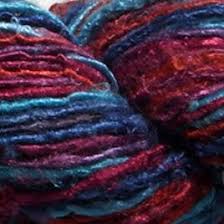The Introduction to the Levitical Priesthood
39: 1-2

From the blue, purple and scarlet yarn Aaron’s sons made woven garments for ministering in the sanctuary. They also made sacred garments for Aaron, as ADONAI commanded Moses. These first two verses are introductory to the entire section of garments for the priesthood and should be understood as a type of superscription or title. The Aaronic priesthood was named after the first in its line, Moses’ brother Aaron. From the outset, it was intended to be hereditary, including only Aaron’s sons (39:1) and their descendants (39:43). The priesthood was a holy office, and dignity and honor were to be given both to Aaron and to his sons (39:40). This was to be expected, because God Himself instituted the Aaronic priesthood.
The main function of the priest (Hebrew: cohen) in the Levitical priesthood was to enter into areas of holiness that were inaccessible to the average Israelite. It was the priest’s job to bring the sacrifice into the presence of ADONAI and to splash its blood upon the bronze altar (to see link click Fa – Build an Altar of Acacia Wood Overlaid with Bronze). It was the priest’s job to minister inside the Holy Place. He facilitated the worship on behalf of the Israelite, because he was specifically equipped to enter into the presence of YHVH.
Two conditions made the cohen able to boldly enter into areas of holiness that other men could not. First, he was sanctified to live at a standard of ritual holiness higher than that of the average Israelite. Lineage through Aaron, various rituals of ordination, the priestly garments and mitzvot of sanctity particular to the priesthood all combined to raise the cohen’s level of holiness above that of other Israelites. Second, the cohen maintained a state of constant ritual purity while serving in the Tabernacle.
It was his job to catch the blood and apply it to the bronze altar. It was his job to carry the animal up onto the altar, tend the fire, and raise it up in smoke to Ha’Shem. It was his job to carry out all the work of the divine service in places too holy for the average layman to tread. In this respect, the priesthood represented Isra’el before the LORD. They carried out the divine service on behalf of the entire nation of Isra’el. The priests were the people’s representatives to ADONAI.
In addition, the priests also represented ADONAI before the people. They were His agents on earth. They were His human ambassadors. In the eyes of the world, the Holy One was unseen, except for His priesthood. For this reason the priests were entrusted with the covenant. They were to be models of holiness, demonstrating lives of separation and righteousness. The Torah holds the priesthood to a higher standard of behavior and distinction than the common Israelite. They were supposed to live “holier than thou” lives because they directly represented the Holy God.
As we discuss the priesthood, our eyes naturally turn to the Master. He has become the High Priest over the house of God (see the commentary on Hebrews Au – The Superiority of the Messiah to the Levitical Priesthood). He represents us before the throne, and He is the visible representation of the Invisible One. As His body, we are a chosen people, a royal priesthood, a holy nation, God’s special possession (First Peter 2:9) and charged with the same role. With one foot on Earth and the other in Heaven, we straddle the holy and the profane. Our job is to elevate this world to the level of holiness while at the same time bringing the holiness of that world into this one. We are intermediaries, and our obedience to Torah as our blueprint for living, our service to the Master, is our sacred worship.616



Leave A Comment